
Experimental Design
Bio300B Lecture 4
Institutt for biovitenskap, UiB
15 September 2025
Starting with a hypothesis
- Proposed explanation for observations
- Testable
Null hypothesis H0 - no relationship
Alternative hypothesis H1 - relationship
Testing a hypothesis - types of evidence
- Observational
- Computer simulations
- Experimental
- Meta analysis and systematic reviews
Which is better? Why are all needed?
Dead Calluna vulgaris
Correlation != Causation
r = 0.95
Drought experiment
Controls
- Turf transplants
- Warmer/Wetter
Bad controls
After rotenone treatment have started, you want to test how the benthic fauna of a river is affected by the treatment.
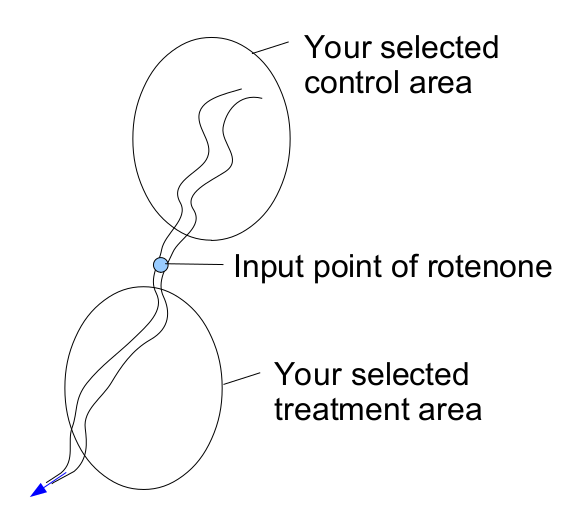
Conditioned samples
H0 : The parasite Schistocephalus solidus does not affect food intake of three-spined sticklebacks.
Design: You collect infected and uninfected fish from the field and compare their food intake in the laboratory.
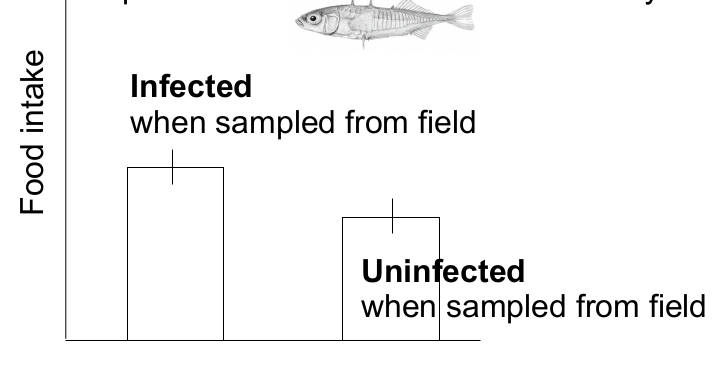
Systematic errors
Example: You want to test the yield of five different types of barley to determine what grain type is the best.
Design 1: Each grain type is planted in separate areas of the field.
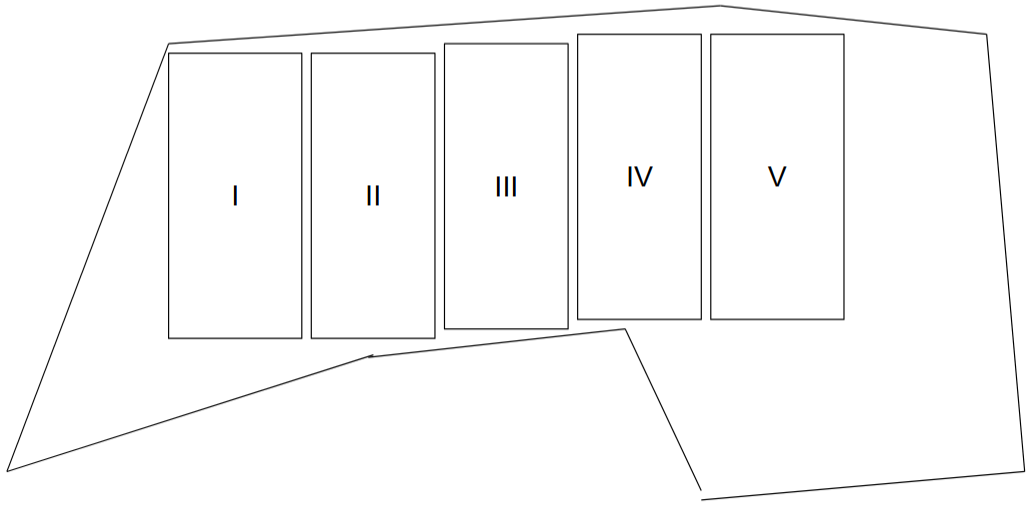
Systematic errors
Design 2: Each grain type is randomly planted in several squares of the field to avoid systematic errors
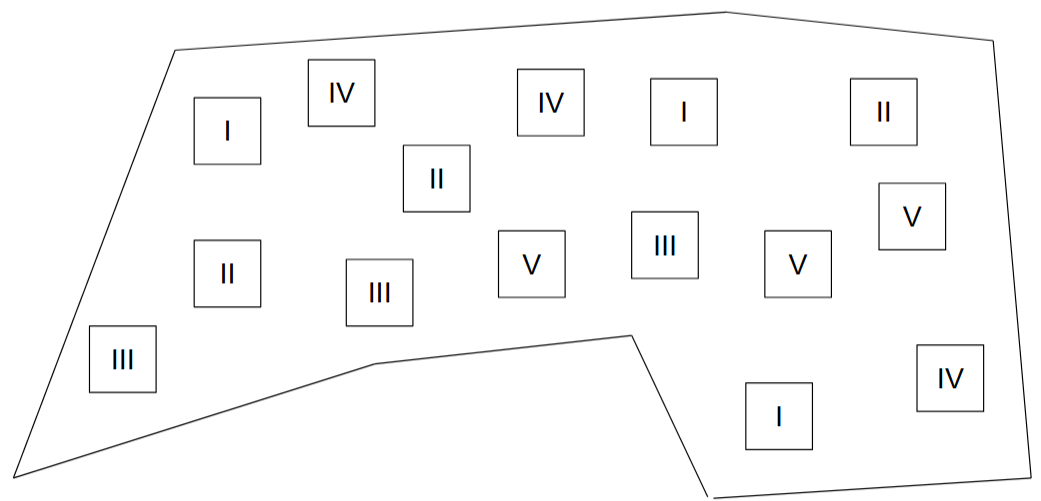
Randomisation is the cure for systematic errors.
Block designs may also be useful.
Replication
One treatment and one control measurement not enough
- Random variability
- Need replication
- Power analysis to estimate how many replicates needed
Randomisation
- reduces bias
- stratified random designs possible
Unbalanced design
Is an experiment with 100 treatment subjects and 10 control subjects valid?
What about 57 treatment subjects and 53 control subjects?
Why might you get an unbalanced design?
Pseudoreplication
Want to test the effect of different fish foods
Mass of each fish measured.
Can each fish be treated as an independent observation in your analysis?
Confounding factors
H0: age of a fish affects parasite resistance because host age affects the immune system.
But, size of a fish varies with age.
Size may also affect the immune system. Thus, size may be a confounding factor in the experiment.

Blocking
Blinding
- Two videos: pigs bred for social breeding value, controls
- Count positive and negative interactions
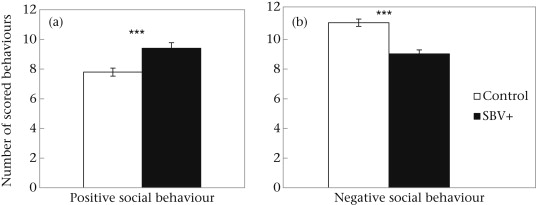
- Same pigs. Video inverted.
Examples
Are there any problems with the following study designs?
Study 1
You want to test growth of salmon depending on three different food types. You have three aquaria with several fish and give one food type to each aquarium.

Study 2
You want to test if a virus enlarges the liver cells of infected salmon. You measure 60 cells, 30 from a fish you have infected and 30 from an uninfected fish, respectively.
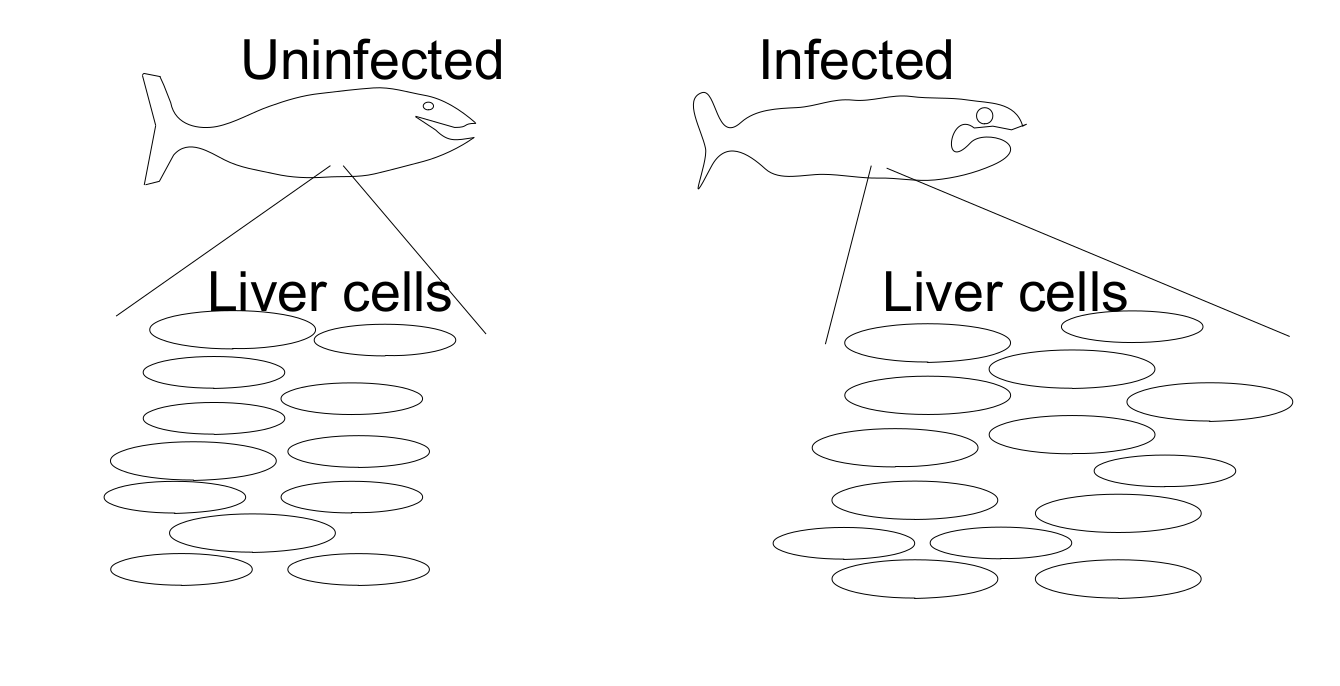
Study 3
You have a D. pulex population in an aquarium and use these animals for an experiment. You place the daphnia individually in 70 ml jars, first the ones you will use as a treatment group, and then the control group. Then, you randomly place control and treatment jars in a climate chamber.
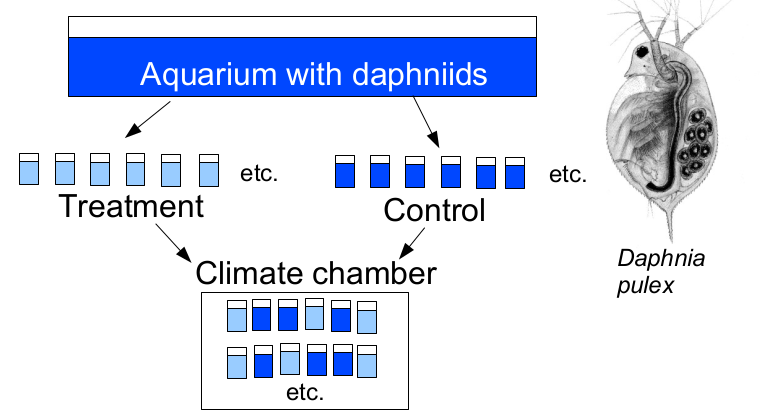
Conclusions
Design the experiment/observations to test your hypothesis
Consider how you will analyse the data when designing the experiment